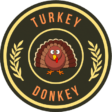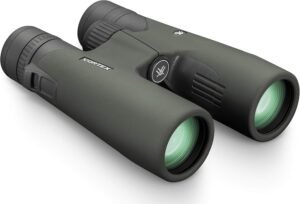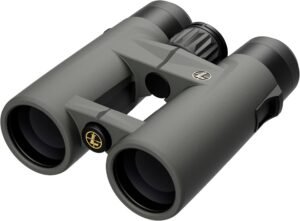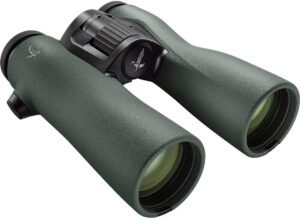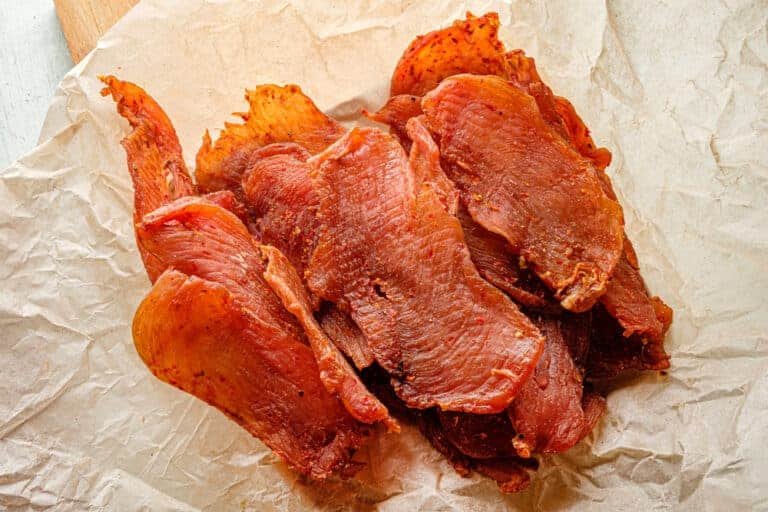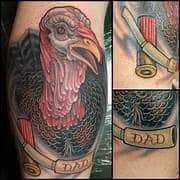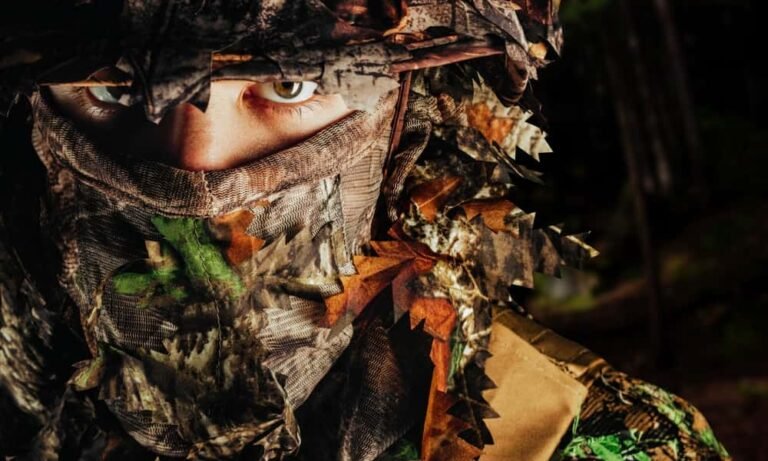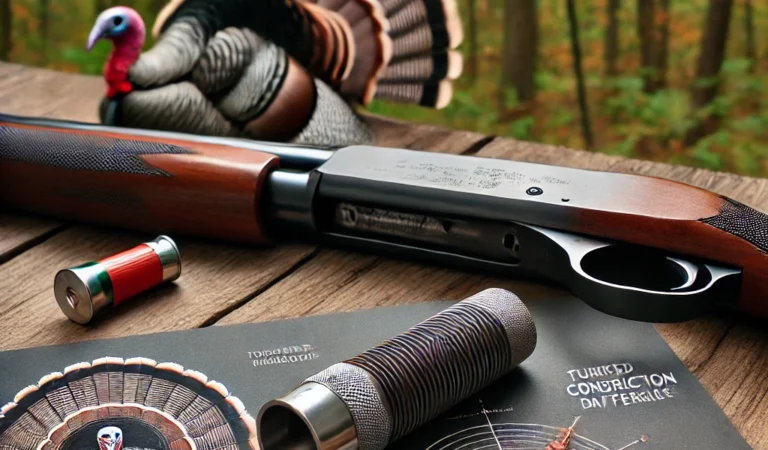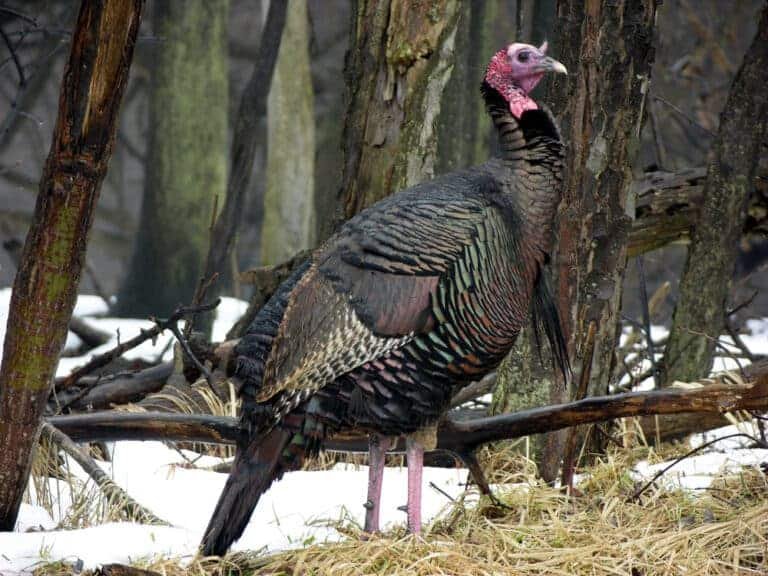Optics 101: Choosing the Best Binoculars for Turkey Hunting
When you’re out in the woods, crouched low and waiting for the perfect moment, your ability to spot a turkey long before it notices you can make all the difference. Having the best hunting binoculars with a wide field of view and advanced optics can turn a distant shadow into a clear target, giving you the advantage needed for a successful hunt.
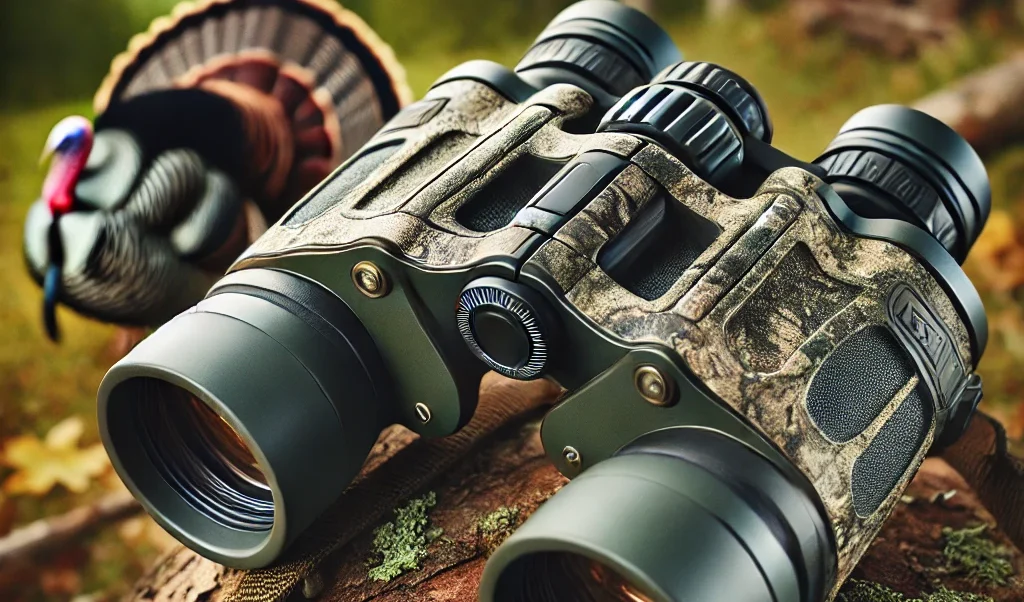
Disclosure: Our website contains affiliate links, which means we may receive compensation if you purchase from websites we recommend. We test and review these products independently, and we do not accept free products or incentives in exchange for positive reviews. Any opinions expressed here are our own.
Turkey hunting requires stealth, patience, and the right tools to ensure success. Among these, a good pair of binoculars is indispensable. Whether scouting from a distance or tracking a bird through dense foliage, having a clear, magnified view can help spot movement that might otherwise go unnoticed.
In this guide, we’ll break down the best binoculars for turkey hunting, focusing on the most important features: clarity, durability, field of view, and portability. From early morning hunts to navigating tricky terrain, these binoculars will keep you one step ahead of your target.
If you need more advice on choosing the best binoculars for turkey hunting, click here for our buyer’s guide.
Understanding Hunting Binoculars
Hunting binoculars are an indispensable tool for any serious hunter. They allow you to spot and track game from a distance, providing a clear and magnified view of your surroundings.
Whether you’re scanning a field for deer or tracking a turkey through dense foliage, a good pair of hunting binoculars can make all the difference. These binoculars come in various shapes, sizes, and magnifications, each designed to meet specific hunting needs.
Choosing the right hunting binoculars can enhance your ability to identify and locate your target, making your hunting experience more successful and enjoyable.
Key Features to Consider
When selecting a hunting binocular, several key features should be at the forefront of your decision-making process:
Magnification: This determines how much the image is enlarged. Higher magnification can bring distant objects closer but may also reduce the field of view and make the image less stable.
Objective Lens Size: The size of the objective lens affects the amount of light that enters the binocular, influencing the overall image quality. Larger lenses provide brighter images, especially in low light conditions, but they can also make the binoculars heavier.
Image Quality: Clarity and sharpness are crucial for identifying game. Look for binoculars with high-quality lenses and coatings that enhance image quality.
Low-Light Performance: Hunting often occurs during dawn or dusk when light conditions are poor. Binoculars with good low-light performance can help you see clearly in these conditions.
Durability and Design: The build quality and design affect the binoculars’ durability and comfort. Opt for models that are waterproof, fog-proof, and rugged to withstand the rigors of hunting.
Our Rankings for Best Binoculars for Turkey Hunting
- Vortex Razor UHD 10×42: These binoculars offer exceptional image quality, high-light transmission, and durable construction. They’re perfect for spotting turkeys in challenging lighting conditions. Price: $1,500
- Leupold BX-4 Pro Guide HD 10×42: Known for their ruggedness and optical performance, these binoculars provide clear, detailed views of turkeys even in dense cover. Price: $600
- Swarovski NL Pure 10×52: A premium choice with excellent image quality, low-light performance, and a comfortable ergonomic design. Price: $3,000
- Zeiss Conquest HDX 10×42: These binoculars offer a balance of performance and price, making them a great option for many hunters. Price: $1,000
- Nikon Monarch M5 10×42: Known for their reliability and affordability, these binoculars provide good image quality and a comfortable viewing experience. Price: $300
1. Vortex Razor UHD 10×42
Features
These binoculars are known for their exceptional image quality and are popular among serious wildlife observers, hunters, and birders. They’re on the higher end of the price spectrum for binoculars, reflecting their premium features and build quality.
Why You Need These
- 10x magnification with 42mm objective lenses
- UHD (Ultra High Definition) optical system for exceptional clarity
- APO (apochromatic) lens system with HD glass elements
- Phase-corrected prisms for enhanced resolution and color fidelity
- Wide field of view (346 feet at 1000 yards)
- Fully multi-coated lenses for maximum light transmission
- Magnesium chassis for durability and light weight
- Waterproof and fogproof construction
- ArmorTek coating to protect external lenses from scratches
- Comfortable, adjustable eyecups for use with or without glasses
- Locking diopter for maintaining your settings
- Close focus distance of 6 feet
- Lifetime warranty from Vortex
- Price: $1,500
2. Leupold BX-4 Pro Guide HD 10×42
Features
These binoculars offer a good balance of optical performance, durability, and value, making them a popular choice for serious outdoor use without reaching the highest price points in the market.
Why You Need These
- 10x magnification with 42mm objective lenses
- HD (High Definition) calcium-fluoride lenses for improved color and clarity
- Phase-coated roof prisms for enhanced resolution
- Fully multi-coated lens system for better light transmission
- Lightweight magnesium body for durability
- Waterproof and fogproof construction
- Scratch-resistant lenses with Guard-ion coating
- Twist-up eyecups for use with or without glasses
- Central focus wheel with locking diopter adjustment
- Field of view of 326 feet at 1000 yards
- Close focus distance of 6 feet
- Tripod adaptable
- Backed by Leupold’s lifetime guarantee
- Designed and assembled in the USA
- Popular among hunters and outdoor enthusiasts
- Known for good low-light performance
- Considered a mid-to-high-end offering in Leupold’s lineup
- Price: $600
3. Swarovski NL Pure 10×52
Features
These binoculars represent some of the finest optics available, designed for professional use and serious enthusiasts who demand the best possible image quality and performance, particularly in challenging light conditions.
Why You Need These
- 10x magnification with large 52mm objective lenses
- Exceptional low-light performance due to large objectives
- State-of-the-art optical system for unparalleled clarity and color fidelity
- Field flattener lenses for edge-to-edge sharpness
- Extremely wide field of view (345 feet at 1000 yards)
- SWAROVISION technology for reduced color fringing
- Fluoride-containing HD lenses for superior color correction
- Fully multi-coated optics with SWAROCLEAN coating for easy cleaning
- Lightweight magnesium housing for durability
- Waterproof to 13 feet and fogproof
- Ergonomic design with unique forehead rest for stability
- Comfortable, adjustable eyecups for use with or without glasses
- Close focus distance of 6.2 feet
- SWAROVSKI OPTIK FieldPro package for comfortable carrying
- Made in Austria
- Lifetime warranty for optical system, 10 years for other parts
- Considered one of the best binoculars on the market
- Very high-end pricing, reflecting premium quality and features
- Price: $3,000
4. Zeiss Conquest HDX 10×42
Features
The Conquest HDX series offers a step up from entry-level optics, providing high-quality Zeiss optics at a more accessible price point than their top-tier offerings. They’re designed to deliver reliable performance in various outdoor conditions.

Why You Need These
- 10x magnification with 42mm objective lenses
- HD lens system for improved color fidelity and sharpness
- T* multi-layer coating for enhanced light transmission
- Schmidt-Pechan roof prism design
- Zeiss LotuTec water-shedding coating on outer lenses
- Aluminum body for durability and relatively lightweight
- Waterproof (400 mbar) and fogproof with nitrogen filling
- Field of view of 345 feet at 1000 yards
- Close focus distance of 6.6 feet
- Comfortable twist-up eyecups
- Large focus wheel for easy adjustment, even with gloves
- Zeiss’s proprietary comfort focus concept
- ¼” tripod thread for mounting
- Robust rubber armoring for grip and protection
- Operating temperature range: -4°F to 145°F
- Backed by Zeiss’s limited lifetime transferable warranty
- Made in Germany
- Good balance of quality and affordability in Zeiss lineup
- Popular among hunters and nature observers
- Known for good low-light performance
- Price: $1,000
5. Nikon Monarch M5 10×42
Features
The Monarch M5 series offers a good compromise between quality and cost, making them popular among enthusiasts who want reliable performance without stretching to premium price points. They’re well-regarded for their optical clarity and durability in outdoor settings.
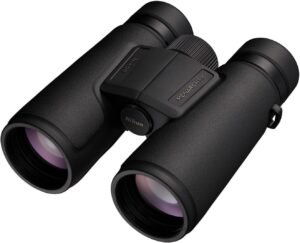
Why You Need These
- 10x magnification with 42mm objective lenses
- ED (Extra-low Dispersion) glass for improved color correction
- Fully multi-coated lenses for better light transmission
- Dielectric high-reflective multilayer prism coating
- Phase-correction coated roof prisms
- Lightweight and durable polycarbonate body
- Rubber armoring for grip and protection
- Waterproof (up to 1m/3.3ft for 10 minutes) and fogproof
- Nitrogen-filled for fog-free performance
- Field of view of 323 feet at 1000 yards
- Close focus distance of 8.2 feet
- Turn-and-slide rubber eyecups with multi-click adjustment
- Central focus knob with diopter adjustment
- Flip-down lens caps for convenience
- Strap lugs for attaching to a harness
- Tripod adaptable
- Nikon’s No-Fault Repair/Replacement Policy
- Good balance of performance and affordability
- Popular among birders and wildlife observers
- Known for good optical quality in its price range
- Considered a mid-range offering in Nikon’s lineup
- Price: $300
Criteria Used for Ranking These Binoculars
Magnification refers to the number of times the binoculars can magnify an image.
Objective Lens Diameter: The diameter of the objective lens (the larger lenses at the front) in millimeters. Larger objective lenses allow more light and provide a brighter image.
Field of View (FOV): The width of the area visible through the binoculars, typically measured in feet at a specific distance (e.g., 1000 yards). A wider FOV allows you to see more of the surroundings.
Exit Pupil: Calculated by dividing the objective lens diameter by the magnification, the exit pupil represents the size of the light beam that enters your eye. A larger exit pupil provides a brighter image, especially in low-light conditions.
Lens Coating: Look for specific coatings like anti-reflective coatings, which reduce glare and improve image clarity.
Prism Type: Binoculars use either roof prisms or Porro prisms. Roof prisms offer a more compact and streamlined design, while Porro prisms often provide better depth perception and image quality.
Close Focus Distance: The minimum distance the binoculars can focus sharply. A shorter close focus distance can be useful for observing nearby objects.
Weight and Size: Consider the portability of the binoculars, especially if you’ll be carrying them for extended periods during hunting.
Waterproof/Fogproof: Check if the binoculars have been sealed with O-rings to prevent water from entering, making them waterproof. Also, nitrogen or argon purging can prevent internal fogging in humid conditions.
Durability: Binoculars designed with a rugged, shock-resistant construction can withstand rough handling in outdoor environments.
Eye Relief: The distance you can hold the binoculars away from your eyes and still see the full image. Longer eye relief is beneficial, especially for people who wear glasses.
Buyer's Guide: Choosing the Right High-End Binoculars

1. Determine Your Primary Use
- Birding: Focus on wide field of view and close focus distance
- Hunting: Prioritize low-light performance and durability
- General nature observation: Look for a balance of features
2. Consider Your Budget
- Mid-range: Nikon Monarch M5, Zeiss Conquest HDX
- High-end: Leupold BX-4 Pro Guide HD, Vortex Razor UHD
- Premium: Swarovski NL Pure
3. Evaluate Optical Quality
- ED or HD glass: All models feature this for better color and clarity
- Lens coatings: Look for fully multi-coated lenses
- Low-light performance: Larger objectives (like Swarovski’s 52mm) excel here
4. Assess Physical Characteristics
- Weight: Consider if you’ll be carrying them for long periods
- Durability: All are waterproof and fogproof, but construction materials vary
- Ergonomics: Comfort during extended use (e.g., Swarovski’s forehead rest)
5. Compare Specific Features
- Field of view: Wider is generally better for tracking moving subjects
- Close focus: Important for viewing nearby objects
- Eye relief: Crucial if you wear glasses
6. Brand Reputation and Warranty
- All these brands are well-respected in the optics industry
- Check warranty terms – most offer lifetime warranties on optics
7. Hands-On Testing
- If possible, try before you buy to assess comfort and image quality
- Pay attention to ease of focus and overall handling
8. Price-Performance Ratio
- Nikon and Zeiss offer great value for their price.
- Vortex and Leupold provide high-end performance at a step below premium prices.
- Swarovski represents the pinnacle of quality with a price to match.
9. Additional Considerations
- Included accessories (case, strap, lens caps)
- Compatibility with tripods or harnesses if needed
Remember, the “best” binoculars depend on your specific needs and preferences. A higher price doesn’t always mean better for your particular use case. Consider your priorities and choose the pair that best fits your requirements and budget.
Conclusion: Finding Your Perfect Pair
Choosing the right pair of high-end binoculars is a personal journey. Whether you’re drawn to the exceptional clarity of the Swarovski NL Pure, the versatility of the Vortex Razor UHD, the reliability of the Leupold BX-4 Pro Guide HD, the precision of the Zeiss Conquest HDX, or the value of the Nikon Monarch M5, each offers unique strengths.
Remember, the best binoculars are the ones that meet your specific needs and feel comfortable in your hands. Consider your primary use, budget, and the features that matter most to you. Don’t hesitate to try different models if possible – there’s no substitute for hands-on experience.
Investing in quality optics can transform your outdoor adventures, bringing distant wildlife and breathtaking landscapes into sharp, vivid focus. With the right pair of binoculars, you’re not just observing nature – you’re immersing yourself in it.
So take your time, weigh your options, and choose the binoculars that will be your trusted companion on countless outdoor journeys. Happy viewing!
